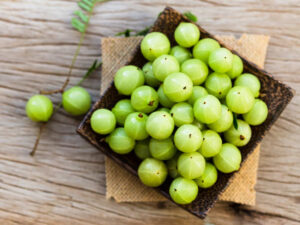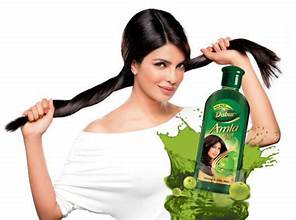INDIAN GOOSEBERRY- Nature’s Boon to Humankind
Before you start reading this blog ahead let’s play a game! The next couple of words you are going to read will form an image in your mind as soon as you read them. Do let us know in DM on our Instagram what comes to your mind at first place when you read that word. Simple! Let’s start the Game. Giraffe, Ford, Pomegranate, Indian Gooseberry, Bear. Wait! What? India Gooseberry? Didn’t you read Indian Gooseberry twice? What comes to your mind when you read that, animal? Vegetable? Or nothing. Let me give you a hint it is a fruit! Now what comes to your mind? Nothing?
What if I tell you we have consumed this fruit in the form of edibles? We have used the products which have this fruit as an important ingredient. Now any guesses? No? Ok. Now let me introduce you the elephant in the room India Gooseberry a.k.a Amla. Yes, you read it right. Amla in English it is called Indian Gooseberry, In Kannada, it is known as Nelli, In Tamil, it is known as Nellikai, In Sanskrit, it is known as Amalki, Shriphala, Sheetaphala, Dhatri, Tishyaphala.
Amla and Ayurveda
In Ayurveda, Amla was believed to be heavenly nectar that contained all rasas thereby, it could impart immortality. Therefore, Indian Gooseberry a.k.a Amla is considered a “Rasayana” bestowed with anti-aging effect. Gooseberry not only has a medicinal use, but it is also an important ingredient for our traditional hair and skin care formulations. In medicinal use amalki’s properties have been identified as a potent antioxidant, immunomodulatory, antistress etc. Amla is considered as “Nature’s boon” in Ayurveda.

Chemical Composition of Amla
Amla is considered as a rich source of Vitamin C. Which help us to boost our immune system and protect us against infections. The approximate composition of Amla is given in the table below:
|
Component |
Content (per 100 g) |
|
Calcium |
25 mg |
|
Calories |
44 Kcal |
|
Carbohydrate |
10 g |
|
Fat |
0.50 g |
|
Fiber |
4.3 g |
|
Iron |
0.31 mg |
|
Magnesium |
10 mg |
|
Potassium |
198 mg |
|
Protein |
0.80 g |
| Zinc |
0.13 mg |
Also, read: Ahmedabad and its Love for Fafda-Jalebi
Amla and it’s benefits.
There are numerous benefits of Amla starting from improving immunity to digestion, reducing stress to weight management, and improving hair and skin.
- Improves Immunity: Amla increases the White blood cells which help flush out the toxins from the body. Apart from this, amla also has antibacterial and astringent properties which helps to improve the body’s immunity.
- Hair Care: Amla is one of the important components of shampoos, conditioners, and hair oils because of its rich antioxidant & iron content. Do you remember the Dabur Amla hair oil Ad? As the ad says Amla is rich in Vitamin C, Antioxidant and Omega 3 which help to reduce hair fall and strengthen the hair from roots also its antibacterial properties help to fight dandruff.
- Eye Care: Amla has high level of Carotene whose effect is well known of vision related conditions.
- Treats Anemia: Deficiency of iron causes anemia and Amla is a rich source of iron which helps in treating anemia.
- Improve Digestion: Amla is rich in dietary fiber which improves the overall digestion process.
- Anti- Aging: Amla has antioxidant properties which help in reducing wrinkles, dark circles etc.
- Improves Mental health: Amla improves nerve health facilitating proper blood flow if consumed daily which results in prevention from disease like dementia & Alzheimer’s. Amalki also helps in improving concentration and memory skills.
- Weight Loss: If Amla is added to one’s daily diet it boosts metabolism thus helping in reducing the body fat.
There are many more benefits of Amla. So, next time if your maa says to consume amla either in the form of Juice, Gummies, Jam or etc. never say no to her and start including it in your diet slowly and steadily to enjoy its extraordinary benefits and to improve your health and quality of life.
If you have any suggestions do let us know on Instagram or visit our website FGITO.





